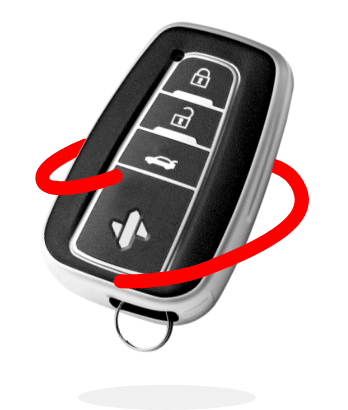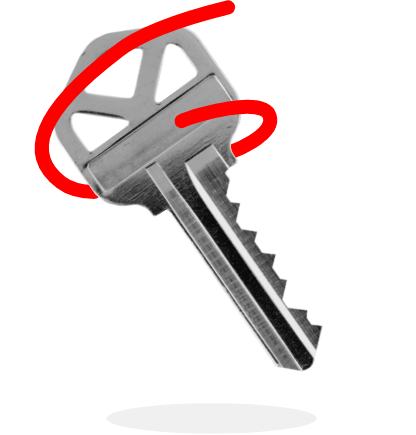Switching auto insurance providers can feel daunting, but it doesn't have to be. Whether seeking better rates, improved coverage, or a new provider, transitioning can be seamless if you follow the proper steps.
The key is ensuring there's no lapse in your auto insurance coverage, as even a short gap could leave you vulnerable to fines, uninsured accidents, or increased rates in the future. Here's a step-by-step guide on switching auto insurance providers without losing continuous coverage.
1. Assess Your Current Auto Insurance Coverage
Before you make any major decisions, review your existing auto insurance policy. Review your coverage limits, deductibles, premiums, and additional features like roadside assistance or rental car reimbursement.
This step will help you identify what's missing or what you'd like to improve in a new policy. Perhaps you're looking for a lower premium, better customer service, or more comprehensive coverage. Knowing where your current provider falls short will guide your search for the right new insurer.
Also, research your policy's renewal and cancellation terms. Some policies have specific cancellation fees or require advanced notice if you intend to terminate coverage. This information will help you plan the switch carefully.
2. Shop Around and Compare Policies
The best way to ensure you're getting the right deal is by comparing policies from multiple providers. Utilize online comparison tools, or work with an independent insurance agent to explore your options. Be sure to evaluate more than the price; coverage details, deductible amounts, and customer reviews are equally important.
When comparing policies, look for features like accident forgiveness, replacement cost coverage, or bundling discounts (if you also need other types of insurance). These benefits can make a big difference in your long-term satisfaction with a provider.
Pro tip: Request a sample policy document from the providers you're interested in. This small step lets you compare the fine print, ensuring there are no hidden exclusions or limitations that could surprise you later.
3. Choose Your New Auto Insurance Provider
Once you've compared your options and found a provider that meets your needs, it's time to move ahead. But before you officially commit, double-check that your chosen provider is licensed in your state and has a strong reputation for financial stability. Third-party ratings, such as those from AM Best or J.D. Power, can help you assess how reliable an insurer is when it comes to processing claims.
When purchasing your new policy, review the start date carefully. Make sure it aligns with the end of your current policy or begins immediately if you're canceling your existing insurance.
4. Set Up Your New Policy Before Cancelling the Old One
Timing is everything when switching auto insurance providers. Before canceling your old policy, finalize and activate your new policy to ensure there's no gap in coverage. This prevents the risk of being uninsured – an issue that could result in fines, license suspension, or personal liability in an accident.
When you purchase your new coverage, you'll receive an insurance ID card or a confirmation document. Keep this proof of insurance handy, especially if your state requires drivers to carry it.
5. Cancel Your Existing Policy the Right Way
Once your new policy is in place, it's time to cancel your existing insurance. Contact your current provider to inform them of your intention to end the policy. (Many insurers allow cancellations over the phone, but some may require a written or email notice.)
Be sure to request written confirmation of your policy's cancellation. This way, you have proof that your coverage officially ended and can avoid being billed for services you didn't use.
If you paid for your policy upfront, ask if you're eligible for a prorated refund. Some insurers may return unused premiums for the remainder of your coverage period.
6. Notify the DMV and Your Lender (If Applicable)
Depending on your state, you may need to inform the Department of Motor Vehicles (DMV) about your updated insurance details. Failing to do so could result in fines or penalties if the DMV believes you're driving without coverage.
Additionally, if you have a car loan or lease, your lender usually requires proof of continuous insurance. To comply with their terms, send them a copy of your new policy's declaration page.
7. Monitor for Any Gaps or Overlaps
Even when you plan carefully, small errors can occur. After switching providers, verify there were no coverage gaps or overlaps in your policies. A gap could leave you uninsured, while an overlap might lead to you paying for double coverage unnecessarily.
Check your documents and billing statements to ensure your old coverage ended on the agreed date and your new policy started as planned. Address any discrepancies immediately with your providers.
3 TIPS TO MAKE THE SWITCH TO A NEW AUTO INSURANCE PROVIDER EASIER
1. Schedule the Transition Wisely
Plan your switch well in advance of your current policy's expiration date. Actioning this change early gives you time to shop around, compare options, and avoid the stress of last-minute decisions.
2. Take Advantage of Discounts
When switching providers, ask about discounts you may qualify for. Many insurers offer perks for good driving records, multiple policies (bundling), or even safe driving habits tracked through telematics programs. Taking advantage of these savings can make your new policy even more affordable.
3. Keep an Eye on Auto Insurance Rates Over Time
Switching providers isn't a "set it and forget it" process. Insurance rates can change due to market conditions, your driving history, or even your credit score. Reassess your policy periodically to ensure it still meets your needs and offers competitive pricing.
Maintaining continuous auto insurance coverage isn't just about staying protected on the road. It can also help you keep future rates low. Insurers often charge higher premiums to drivers with coverage gaps, as they view those drivers as riskier to insure.
By planning your switch carefully and ensuring no lapse in coverage, you're protecting both your finances and your peace of mind. Switching auto insurance providers doesn't have to be a headache.
With the right strategy, you can improve your coverage, save money, and maintain continuous protection without any hassle. Start the process today and enjoy driving with confidence, knowing you're covered where it counts.
If you need help finding the best car insurance coverage for the best price, speak to a SimplyIOA agent at 833.872.4467 or get an auto insurance quote online now.










